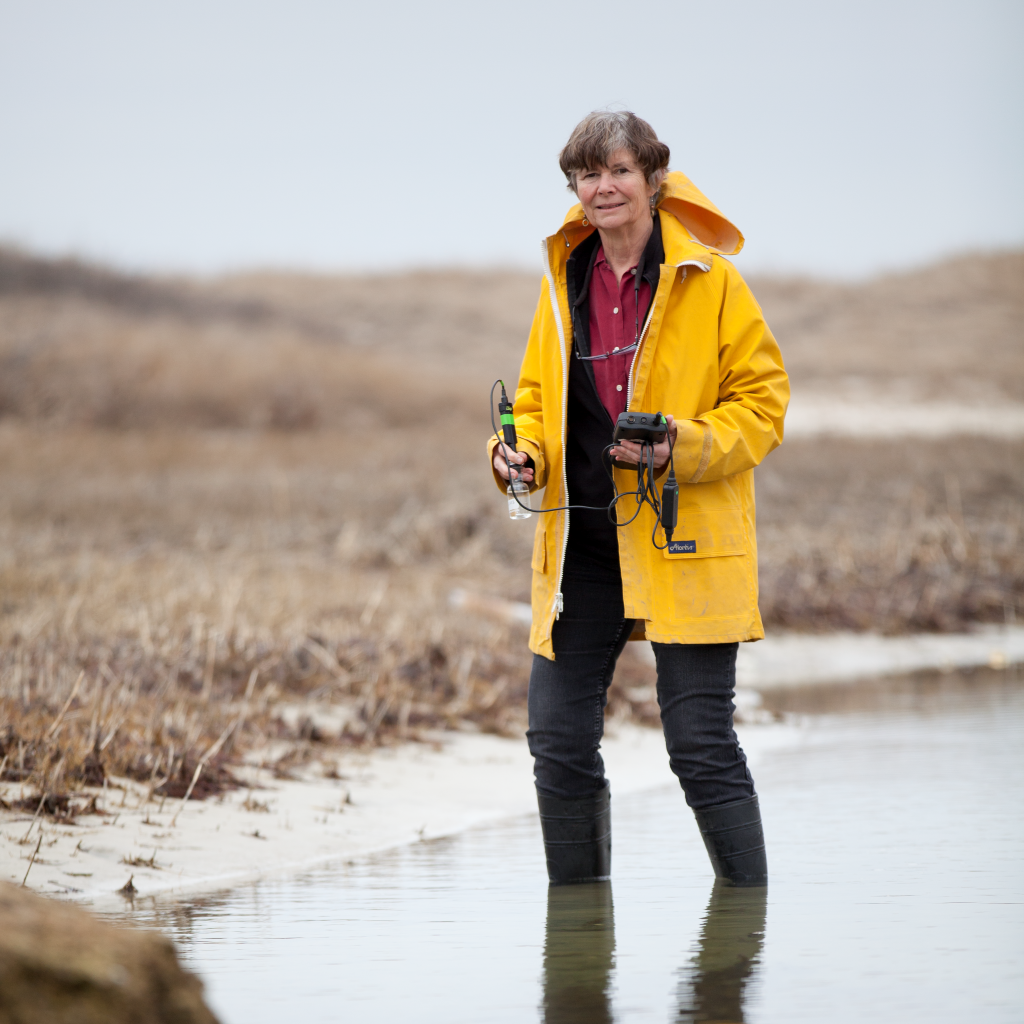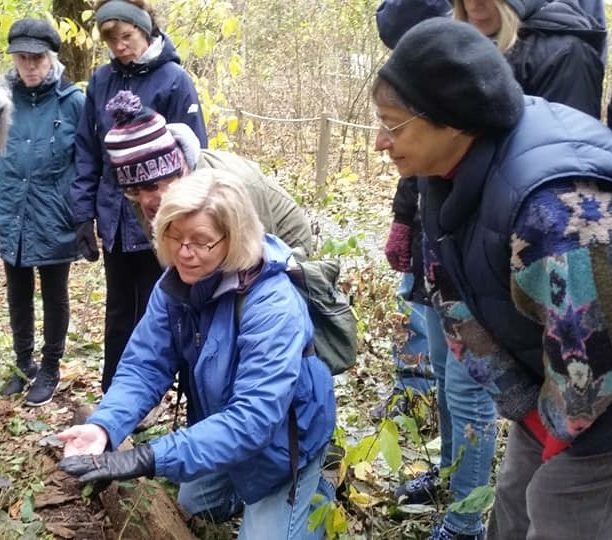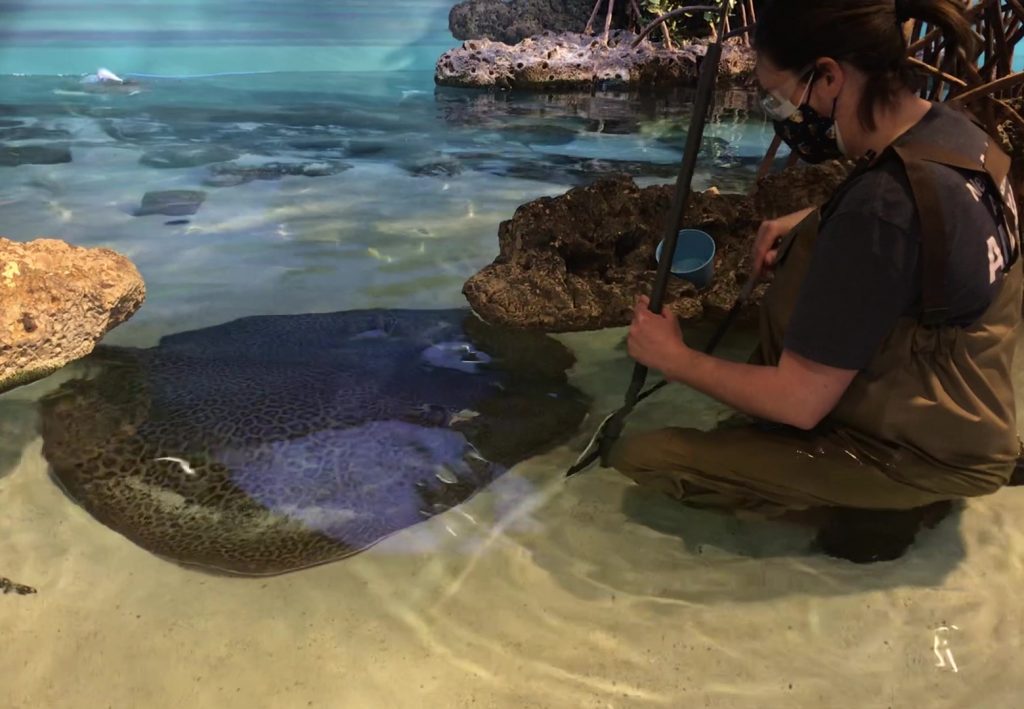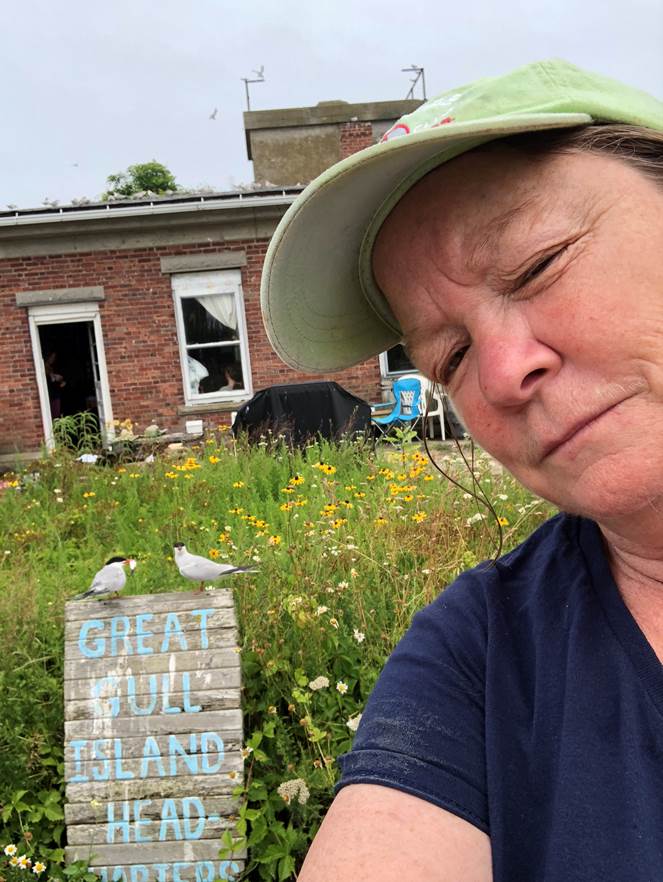Friday, March 26, 2021
For Immediate Release
Wade Institute Celebrates
Women in STEM Education for Women’s History Month
Quincy, MA – Since its inception in the 1980’s, the Wade Institute for Science Education (then MITS, Inc.) has worked with over 100 nonprofits, museums, aquaria, nature centers, science centers, technology centers, cultural organizations, corporations, and more. As a nonprofit corporation founded by a woman, led by a woman, and staffed by (right now) all women, the Wade Institute is ecstatic to recognize individuals at our partner organizations who are making history through their present actions. How did these women come to work in STEM careers? Who are they, and what do they do? We asked five of our partners about their backgrounds, love of science, and how their current work contributes to STEM education. Learn about these Women in STEM:
Interview with Anne Giblin, Ph.D., Senior Scientist & Interim Director, The Ecosystems Center at Marine Biological Laboratory (Woods Hole), Plum Island LTER

photo courtesy of Anne Giblin
Photo credit: Danial Cojanu
What path(s) did you take to come to work in STEM?
I always like science as a kid and my parents encouraged me by doing things like taking me to museums and aquariums, buying books on science, and getting me a chemistry set and a mask and snorkel. They were not scientists but curious people. Then, I was fortunate in college to do a summer research project which convinced me I wanted to do science as a career. I also have been fortunate to have good mentors.
Please describe your work in STEM. What are your main projects or initiatives?
I am an ecologist. I work on whole systems like marshes, lakes and estuaries. Most of my work involves understanding the flow of elements, carbon, nitrogen and phosphorus. For example, I look at how much carbon is stored by marsh sediments. I also have done a lot with the detrimental impact of too many nutrients from sewage and fertilizer on coastal systems. Currently I lead a long-term ecological research (LTER) project examining the Great Marsh, a large salt marsh north of Boston.
How does your current role contribute to the STEM education community?
I am directly involved in teaching undergraduate students as part of courses we run at the MBL. I also am on the advisory committees of graduate students. As part of my work with the LTER, I participate in a variety of K-12 activities that are organized by our education director. These include marsh tours, and working with teachers as I did with the Wade Institute.
Interview with Martha Gach, Ph.D., Education Manager & Conservation Coordinator, Mass Audubon / Broad Meadow Brook Wildlife Sanctuary and Conservation Center

Photo courtesy of Martha Gach
Photo credit: Worcester Institute for Senior Education (WISE)
What path(s) did you take to come to work in STEM?
I took a very traditional path. I was always interested in science, and had adults who encouraged me, including my parents. I was the ‘smart girl’ at school and enjoyed it! I played outside a lot, did ‘chemistry experiments’ at home, and became president of the Science Club in high school. I majored in Biology in college, then joined the Peace Corps and taught science in the DRC, in Africa. I was fortunate enough to work my way through grad school and combined genetics with wading in the wild for fish specimens. After teaching at a University and having kids, we moved to Massachusetts and I found work that lets me teach, play outside, research, and care for a wildlife sanctuary.
Please describe your work in STEM. What are your main projects or initiatives?
I manage natural habitats for wildlife and create new ones such as rain gardens and meadows at an urban wildlife sanctuary. I teach high school and college students about ecology and help them design and carry out research projects about climate change, water quality, and monitoring sensitive species. I also fight invasive species, teach adults about the environment, write grants to do our work, and coordinate the volunteers who come to help at the sanctuary. A project I’m really excited about is restoring a large, degraded wetland to increase its habitat value and climate change resilience. It’s potentially a multi-million dollar project that involves collaborating with lots of partners. For fun, I’m learning to know our native wild bees.
How does your current role contribute to the STEM education community?
I am definitely part of that community, directly through teaching & mentoring students and providing professional development to teachers so they feel more confident teaching science. Within my organization (Mass Audubon), I coordinate all our education staff and programming for Worcester County, and get to work with colleagues across the state. As an officer of the Massachusetts Butterfly Club, I encourage people of all ages to learn about butterflies, create butterfly gardens, and contribute to butterfly research and conservation. And as a member of my town’s Conservation Commission, my role is to protect wetlands and help people understand how to do that and why it’s important.
Interview with Christina Minniti, Aquarist II, New England Aquarium

Photo courtesy of Christina Minniti
Photo credit: Audrey Santos, Senior Aquarist, NEAq
What path(s) did you take to come to work in STEM?
As an undergrad, I worked as a portrait photographer, but jumped at any chance I got to create nature and editorial features. The more time I spent outdoors with my camera, the more I started asking questions about what I was seeing through the lens. I quickly fell in love with chemistry and the biology of tiny things. When it came time to declare a major, I couldn’t decide between the two so I double majored in biochemistry and microbiology. I am greatly inspired by Janine Benyus, founder of the Biomimicry Institute, who came to speak at my university while I was studying there. Her work focuses on bringing “biology to the design table”, which she describes as studying and learning from the natural world around us in order to advance human innovation. This way of seeing the world really solidified for me the power of art and exploration to generate the curiosity needed for rigorous scientific study.
Once I became a newly minted STEM graduate, I began working as an content editor at a science journal in Cambridge. This experience was invaluable to my career, as I was able to speak to researchers from widely diverse fields about their work and process as I guided them on the road to publication. After a while I focused on marine sciences and was itching to get wet first hand, so I began to volunteer with the New England Aquarium, where I now work full time.
Please describe your work in STEM. What are your main projects or initiatives?
The job of an aquarist is an unusual one that most people are surprised to discover. We work to manage the welfare of animals, maintain life support systems and water chemistry, and ultimately inspire our community to become invested in their natural environment. This work is intimately linked to STEM: the scientific process allows us to learn about each species we care for, innovative technologies are required to maintain elaborate habitats imitating natural environments, and mounds of math are needed to get the flow dynamics just right. Throughout my tenure at NEAq I’ve used a lot of the Science and the Math principles to manage pest insect populations in our mangrove collection and learn to communicate with our sharks rays as one of NEAq’s resident elasmobranch trainers. Currently, the project that is taking up most of my time is a growth and longevity study that will help us improve the welfare for our upside-down jellies (cassiopea sp.).
How does your current role contribute to the STEM education community?
Aside from sharing my work through presentations and public engagement, I also mentor teens and adult interns and volunteers. I love working with teens in particular because they are so full of ideas and optimism for the future. It’s a wonderful feeling to learn something new from someone who doesn’t know that it was an “impossible” thing to do.
Joan Walsh, Gerard Bertrand Chair of Field Ornithology & Natural History, Mass Audubon

Photo courtesy of Joan Walsh
What path(s) did you take to come to work in STEM?
I was interested in science at a very young age. I would take things apart or build things just to figure them out. I built boats out of scrap wood in the garage and remember very vividly spending a whole day trying to figure out how to build an anchor because my homemade boat kept floating away. I also spent a lot of time outside. My friends and I would go to the Old Farmington canal and investigate the wildlife. We’d come home all muddy and wet, but we didn’t care. That was the way suburban kids grew up in the 60’s.
As one of six children, I knew growing up that I would have to work to support myself and that the most suitable career for me would be both outside and science-based. I started working when I was a teenager — as a cleaner, at a plant store in the mall, in a box office, and in college as a bird researcher. Each opportunity helped me to grow, but realistically, I just don’t know that anything else besides science would have made me happy.
I’m proud to say that I’m a first generation college alumna! In the 70’s-80’s when there still weren’t that many women pursuing science, I paid my own way to undergraduate school to earn my degree in biology from Southern Connecticut State University. I treated school like a full-time 40-hour per week job to get good grades, and was inspired by my professors and peers. Like me, many of my peers worked part-time to support themselves through school, but we all still somehow found time to do our field research. My field research was on Great Gull Island, an initiative of the American Museum of Natural History led by conservationist and ornithologist Helen Hays. I came to realize that if someone has a good professor or mentor who inspires them, that person can go on to do anything. I also recognized how rare I was as a woman in STEM and only now am realizing how fortunate I had been to be mentored by a woman, and supported fully by my male counterparts.
Please describe your work in STEM. What are your main projects or initiatives?
My role as the Gerard Bertrand Chair of Field Ornithology & Natural History is unique. My research on common terns and endangered roseate terns takes place in Brazil, New York, and Massachusetts, with another potential research site blossoming in Belize. These projects are made possible through partnerships, and I can’t stress the importance of building partnerships in your career. Look for opportunities to knit together topics and expertise – and never burn a bridge!
In Massachusetts, I have been working with partners to predict how offshore wind turbines will impact wildlife and identifying tools to minimize and mitigate for the effects of these clean energy technologies. Since seabirds aren’t used to wind turbines (or any tall structures) in their environment, we are measuring the effects of the presence of turbines on birds, identifying the species most affected, and calculating the rate of collisions between birds and turbines. Then we need to mitigate for losses, hopefully ending up with more birds than we started with. For young people looking for hands-on, practical experience in the field, getting into the offshore wind science would be a powerful job, from the applied conservation perspective as well as from the clean energy perspective. It is super exciting, and will grow tremendously in the next 10 years.
In New York, the research focuses on avian diets, specifically Common and Roseate Terns. What do terns feed their young, and how are their food sources changing as the climate changes? We really want to know how the warming waters of the Long Island Sound are influencing tern’s food abundance and accessibility. We are currently ramping up our remote data collection techniques to collect more information this summer.
In Brazil, we are working to reduce the collisions of roseate terns with power lines by placing markers along the lines to make them more visible to the birds when they return to land after foraging at sea during the day. This work is a partnership of two federal governments, e-NGOs, and power companies. It is a great project, and one we are all really proud of.
How does your current role contribute to the STEM education community?
In my role, I need to be able to share my research with a wide audience. This involves effectively breaking down the complexities of the science content and communicating the science in ways that anyone can understand. I hope that my work will inspire young people to learn and practice field research, and older people to take action to protect wildlife. There are many problems to solve, and the bigger the problem is, the more important it is that we get going on solving it. It seems to me that as we move forward and invest in science, everyone needs to be involved – and we need to focus on bringing people of color, underserved communities, and indigenous people into our work. Everyone has the capacity to be a change agent – everyone. Every person can contribute, and we need that because who knows what someone might invent!
A Final Word From the Wade Institute for Science Education
The Wade Institute for Science Education promotes and enables inquiry-based, hands-on, minds-on, science, technology and engineering professional development for K-12 teachers and informal educators. Partnerships and collaborations are vital to our work, but not just to ours, to the whole of STEM education. It is through these partnerships that we meet exceptional individuals who inspire us to reexamine our own paths towards careers in STEM and who enlighten us with their expertise. We are honored to share the STEM stories of Dr. Anne Giblin, Dr. Martha Gach, Christina Minniti, and Joan Walsh. May their stories inspire you as well!
Find more information about the Wade Institute’s partners at www.wadeinstitutema.org/partner-organizations.
###
The Wade Institute for Science Education specializes in providing inquiry-based, hands-on, minds-on, science, technology and engineering professional development for K-12 teachers and informal educators. For more information, visit www.wadeinstitutema.org or call 617-328-1515.
